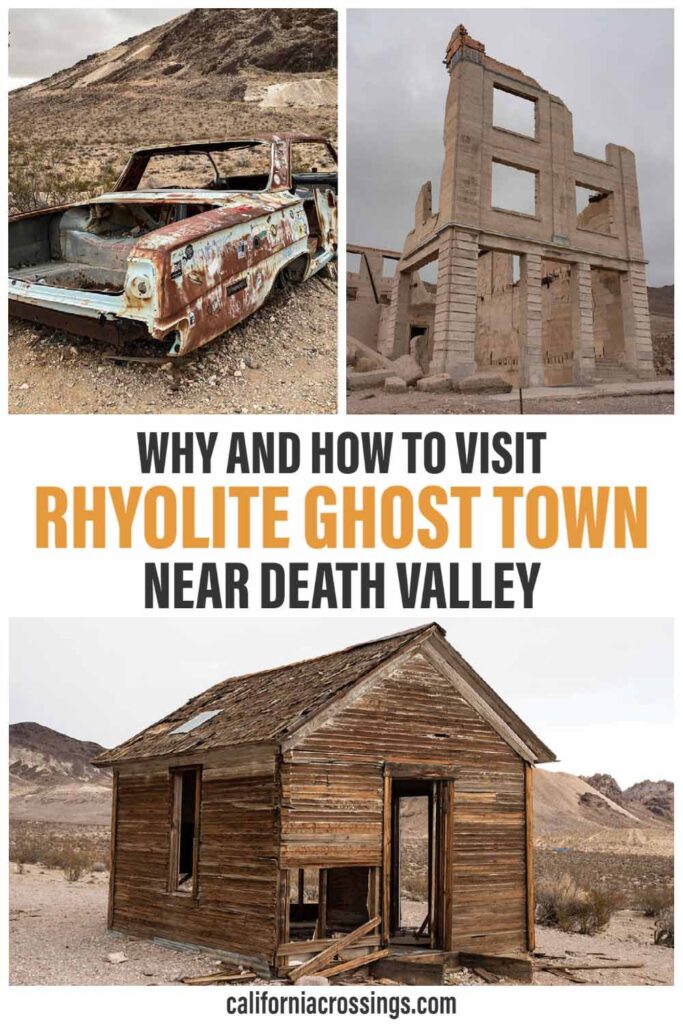California is chock-a-block with old mining towns. And there are even quite a few of ghost towns right in and around Death Valley. But Rhyolite is one of our favorites for it’s accessibility, architectural ruins and artsy things to do nearby. So, whether you are doing a Nevada road trip or on your way to visiting Death Valley, you should definitely stop at Rhyolite ghost town.
Rhyolite is worth visiting because it’s an interested take on California’s later mining boom, the explanatory signage offers context for the historical site, the Bottle House is one of the most intact in the US, and well, because old ghost towns are simply cool.
Our guide will give you some backstory on how the town came to exist…and how it came to decline. We’ve got some practical tips for how to visit and some cool pictures of Rhyolite that will make you want to go now.
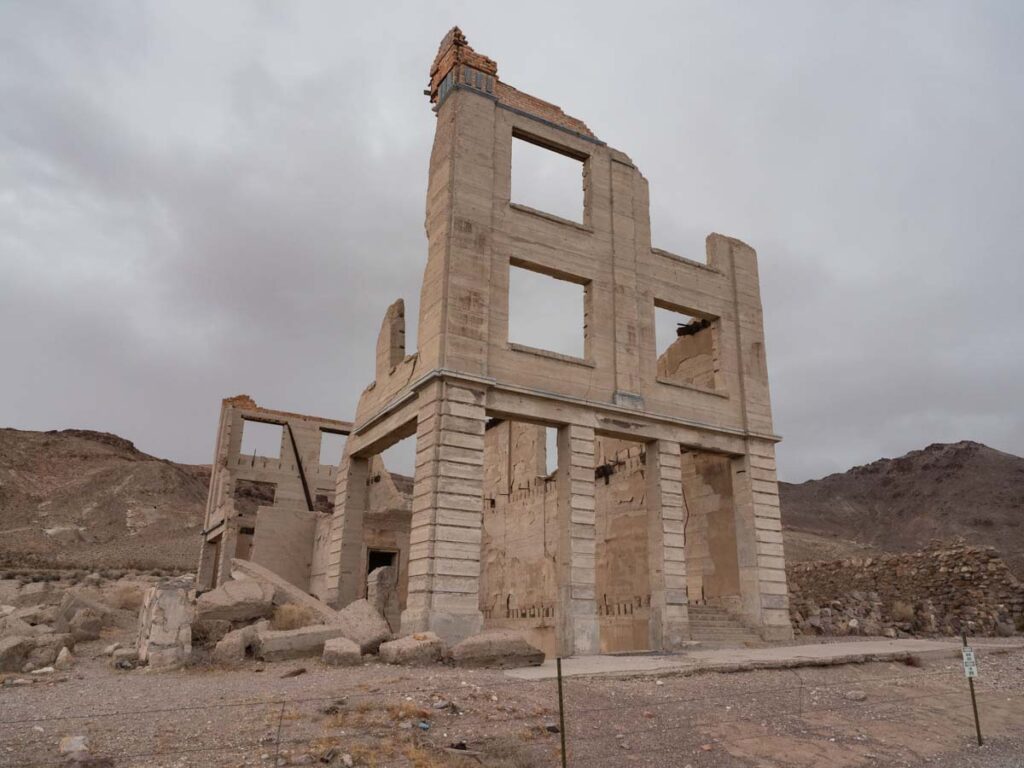
(This article contains affiliate links. This means that if you choose to purchase, I’ll make a small commission.)
Rhyolite Ghost Town History
Rhyolite’s mining strike was a little late to the California gold rush party. While the original California gold strike was in Sutter’s Mill in 1849, mining exploration didn’t begin in Rhyolite until 1904. So, this region’s boom happened at the tail end of the rush. But by the early 1900’s, there was quite a bit of prospecting going on in the area, particularly around Tenopah and Goldfield.
In 1904 Shorty Harris made a strike in the hill near what ultimately became Rhyolite. He and his buddy Ed Cross called the area “Bullfrog” for its mix of green landscape and yellow rocks, which they felt resembled a frog. An assay of the ore samples suggested that it was of a very high quality. Word got out and miners poured into the Bullfrog mining district from around the region.
Like so many of California’s mining towns, Rhyolite went from bare dirt to fully fledged town in fairly short order. In January of 1905, it was a 2-man camp, within weeks it went to 1,200 people and by the following June, the population was 2,500. By then the town had respectable businesses like 16 restaurants, bathhouses, 6 barbers,19 lodging houses and a newspaper. And then there were the not-so-respectable businesses such as 50 saloons, 35 gambling tables and a segregated red light district just east of town.
By then the mine’s owner, Bob Montgomery and his partners, decided to sell the mine to Charles M Schwab. Schwas used his considerable resources to expand the scale of the mining operation. This included mining upgrades like building new tunnels, and hiring more workers. But it also included infrastructure improvements in town like securing water access and laying railroad track.
The result was that this dusty mining town became a real town in pretty short order. By 1907, 4,000 people lived in town and they benefitted from concrete sidewalks, electricity and telegraph lines. The businesses grew and a fancy bank, churches and an opera house came in.
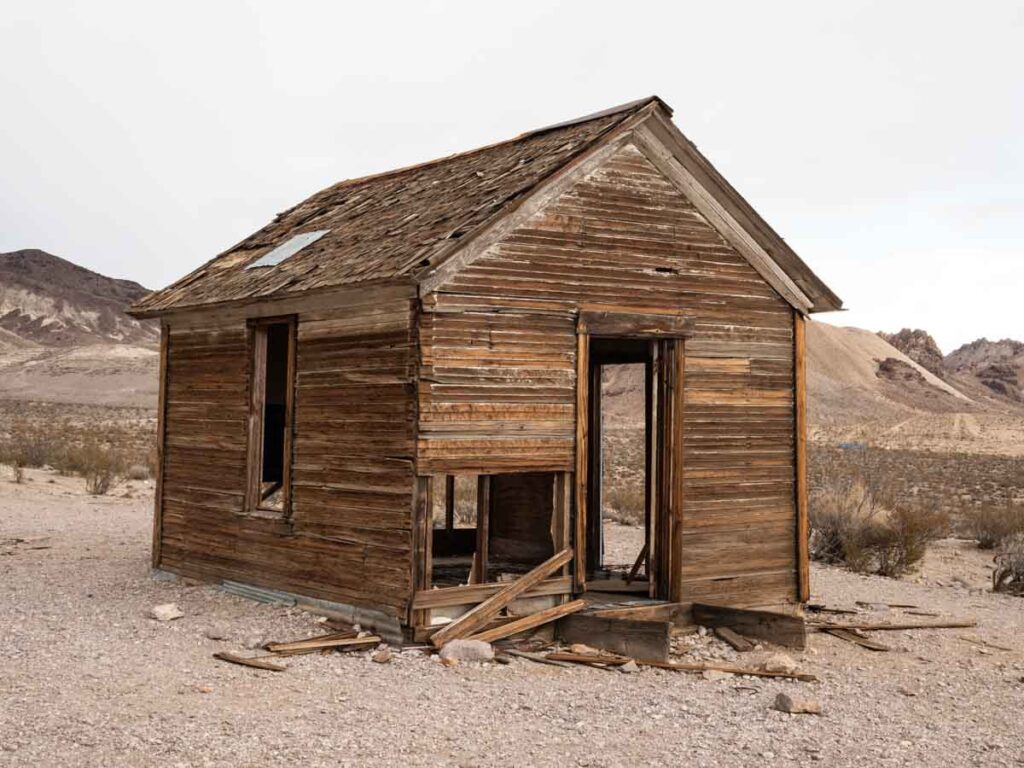
Some of California’s mining towns managed to navigate the transition from boom town to normal town. Places such as Nevada City, Sutter Creek and Sonora have prospered. But Rhyolite simply couldn’t make the transition.
The bloom started to fade from the rose in 1909. As assessment of the mine found it to be overvalued. Production fell and workers began to drift elsewhere. A year later, the mine was operating at a loss and the year after that, it closed. This precipitated a swift, steep decline in Rhyolite’s fortunes. Residents and businesses fled and by 1916, the electricity was turned off.
Some of the town’s buildings (and building materials) were moved to other mining sites and nearby towns. But enough remains of the original Rhyolite to make it worth visiting.
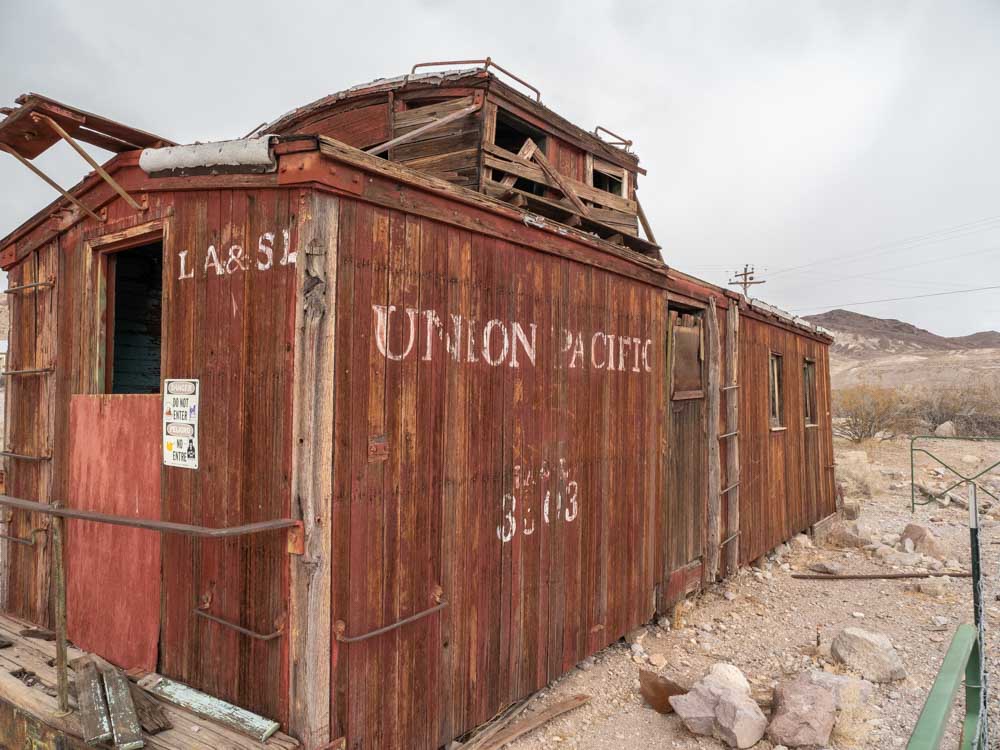
Nevada’s Rhyolite Ghost Town FAQ
Can You Visit Rhyolite Ghost Town?
Yes. The site is open year round.
Where is Rhyolite?
Rhyolite is located just 6 miles west of Beatty, Nevada on Highway 394. It’s 30 miles from Stovepipe Wells (in the park) to Rhyolite.
Does Rhyolite Have an Entrance Fee?
No, you can simply drive in and wander around. There are fees to visit Death Valley National Park, but Rhyolite is just outside of park boundaries.
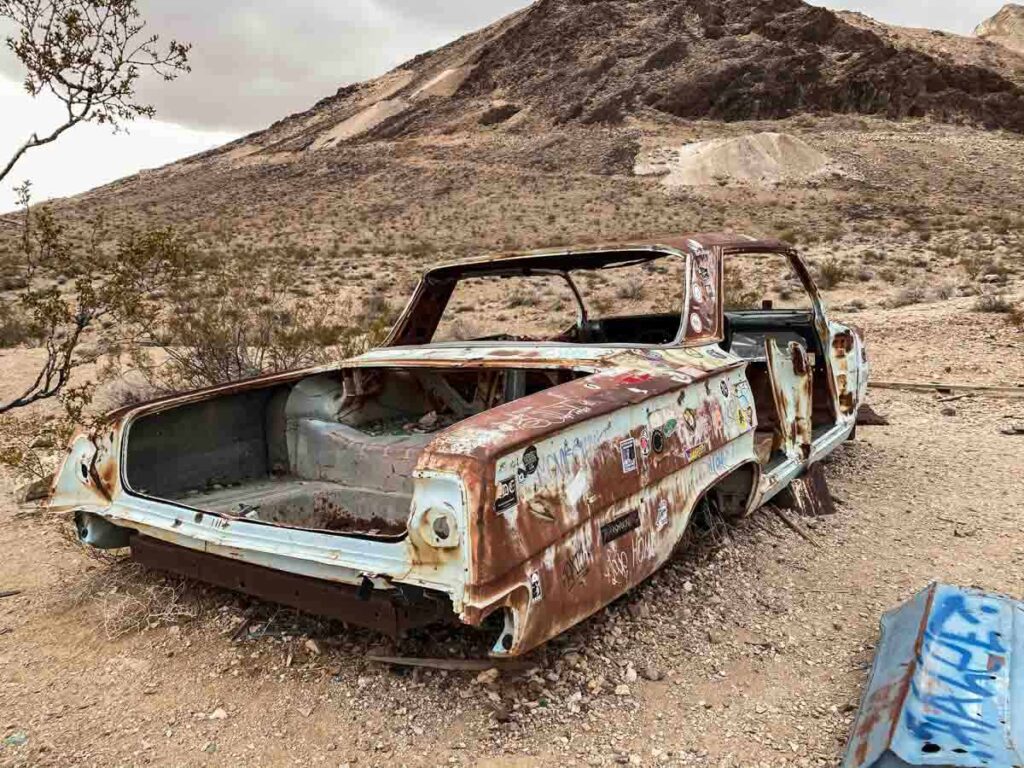
What To Do and See in Rhyolite
The main event is simply wandering the ruins. They make up about 5 linear blocks of semi-intact buildings with some rail cars and old huts scattered around. Give yourself about an hour to wander the rail car, the train depot, the old school and the outbuildings.
Be sure to make time for the Tom Kelly Bottle House. It’s on the right as you enter town. It’s hard to miss as it’s a small cabin with walls made entirely of glass bottles. Remember those 50 saloons mentioned above? Well, those hootch bottles had to end up somewhere. So, in 1906, Kelly used them as his primary building material. Kelly never actually lived in the house, he raffled it off to a local. But the house still stands and has even been used as a movie set.
Across the road from Rhyolite is the Goldwell Open Air Museum. The site houses a series of thought-provoking sculptures. Some are whimsical, some are creepy and some are mysterious. The project was started by Albert Szukalski, a Belgian artist who created a series of ghostly plaster and burlap sculptures called The Last Supper. The site has since expanded to include a permanent collection of seven sculpture pieces and an artist-in-residence program.
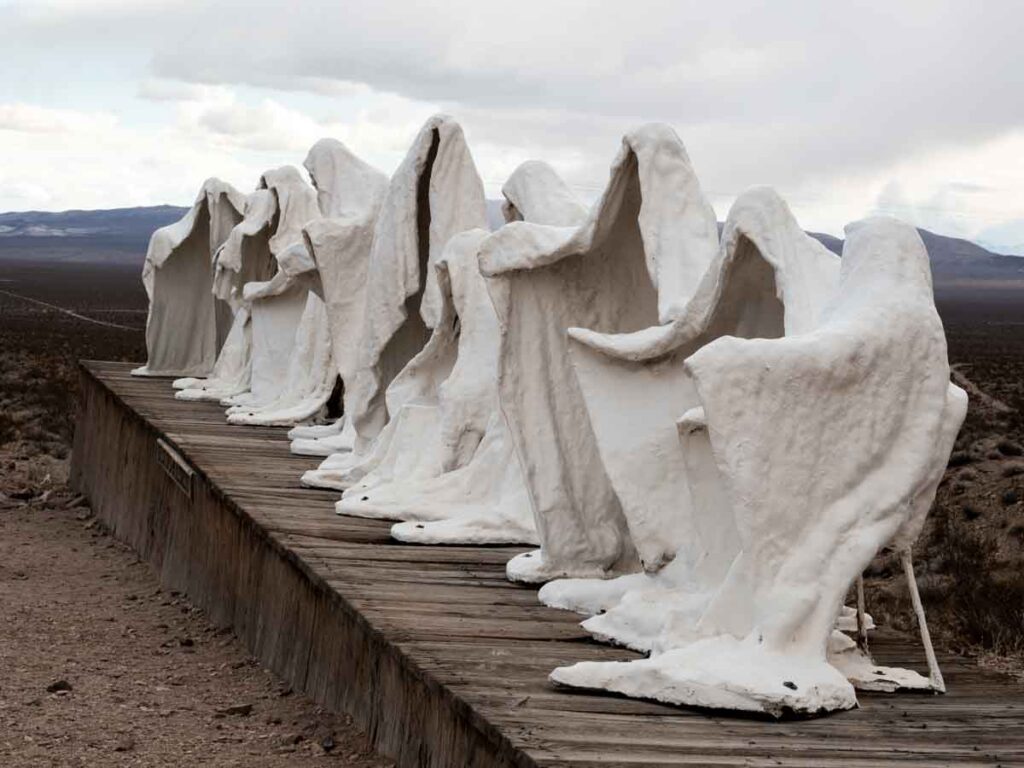
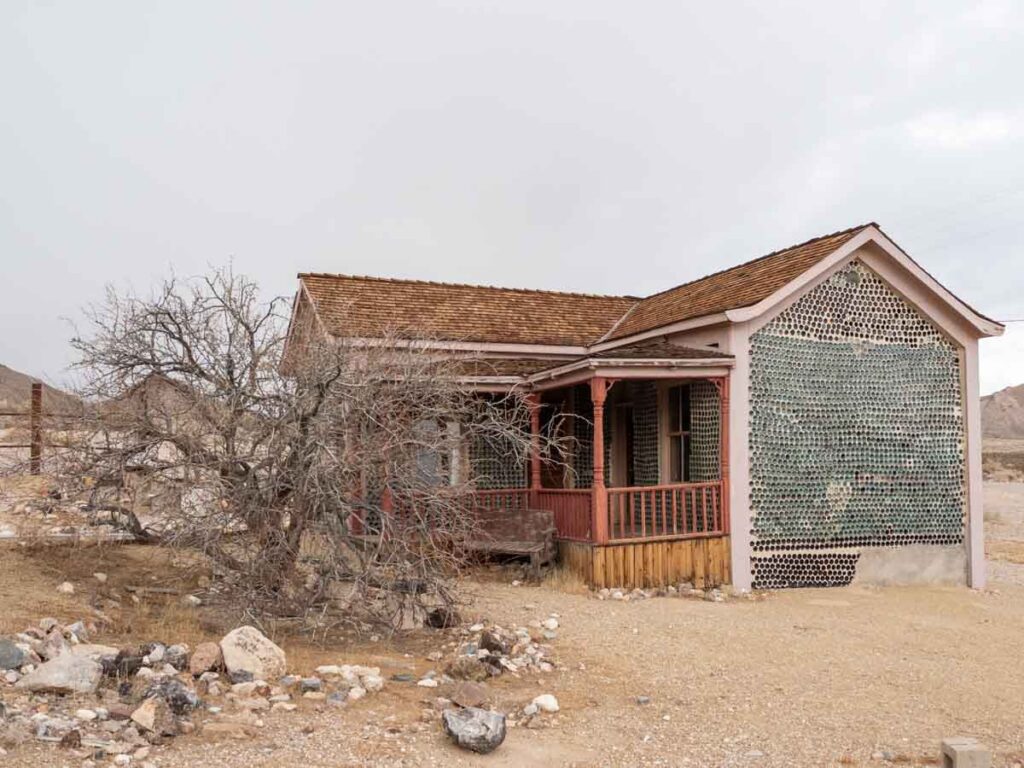
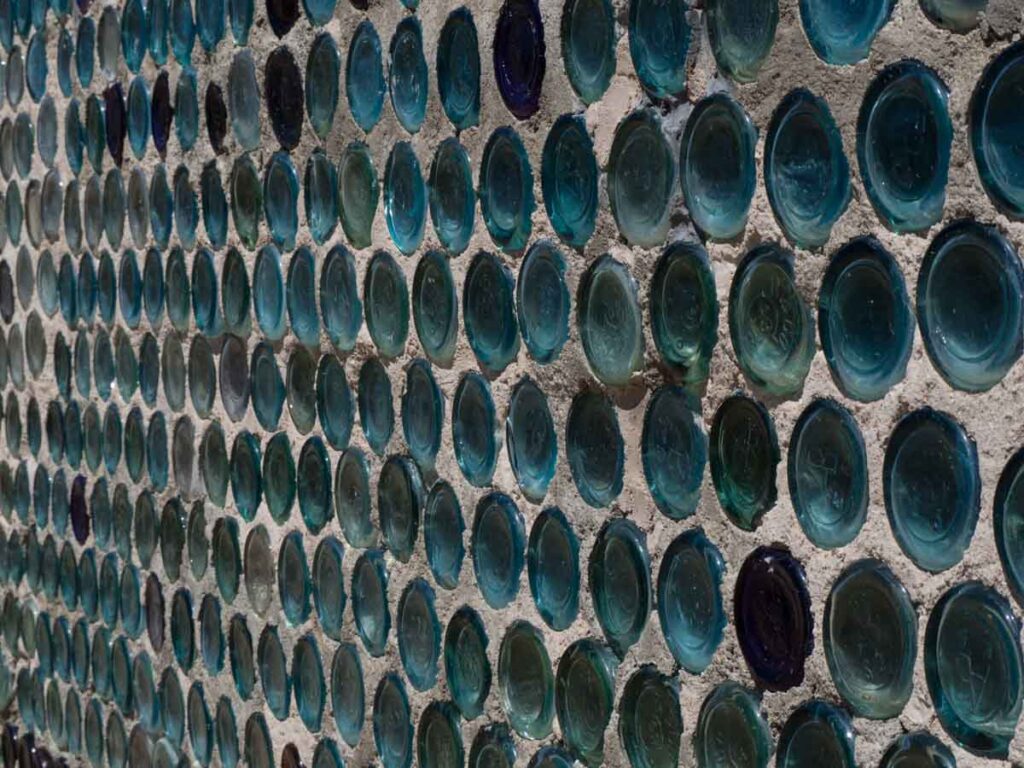
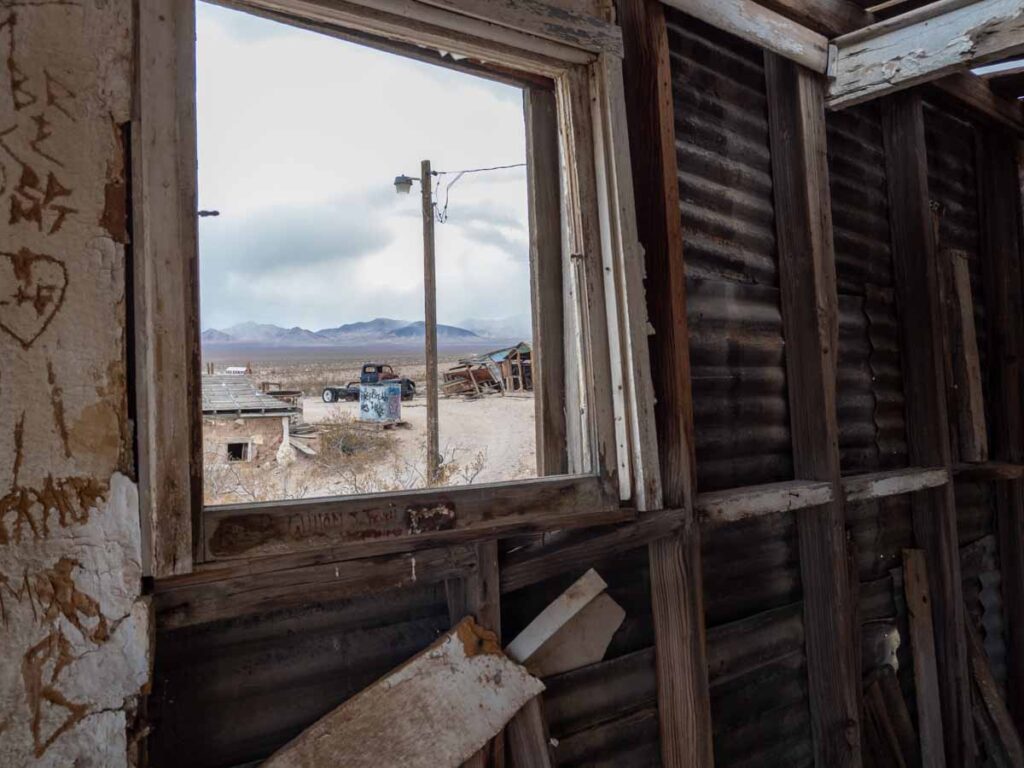
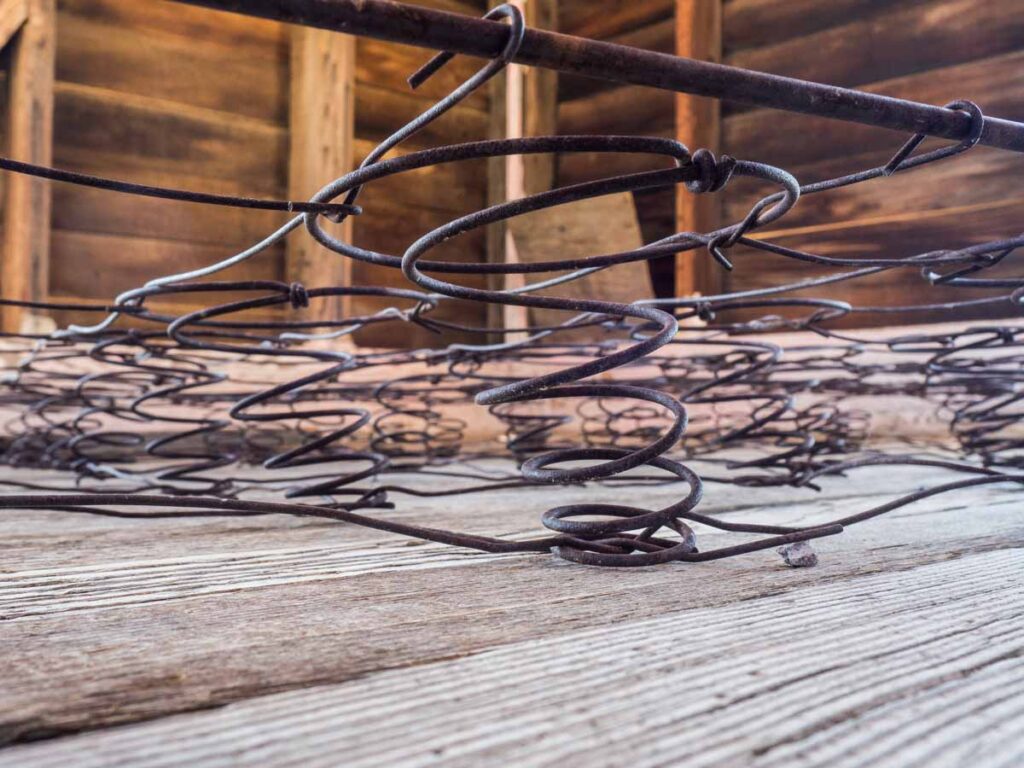

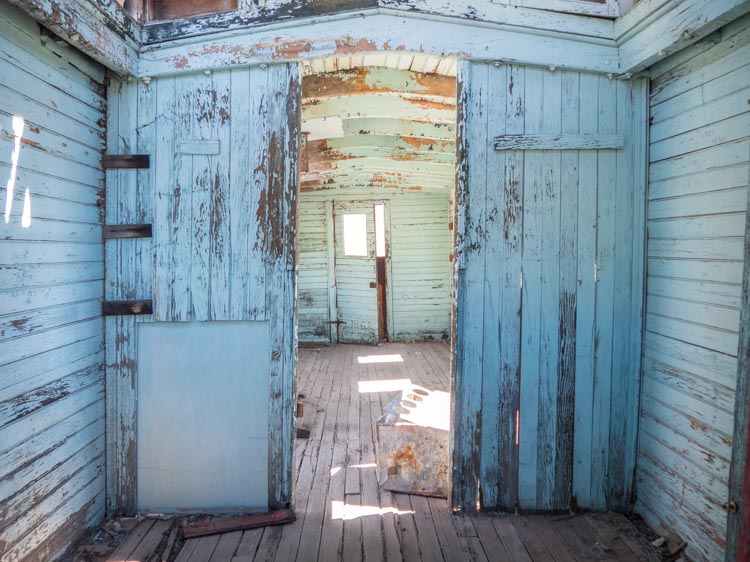
Resources for Visiting Death Valley
If you are visiting Rhyolite, Nevada as part of a larger Death Valley trip, then be sure to check out our extensive list of resources to help you plan your time in the area.
Where to Stay in Death Valley
If you want to spend the night in nearby Beatty, Nevada, your options are limited to a few inexpensive motels. Beyond that, there are three hotels in the heart of Death Valley and a number of less expensive options in Pahrump, Panamint Springs and Ridgecrest. Use our Death Valley hotel guide to help you figure out your best option.
If you are keen to camp, there are several RV parks in nearby Beatty. The nearest tent camp would be at Stovepipe Wells. But there are also 11 other campgrounds in the park, with 6 of them right in the thick of things. Use our Death Valley camping guide to find the best spot for you.
Plan Your Death Valley Itinerary
We have a whole visitor guide for Death Valley, which outlines the top things to do, tips for when and how to visit, and other practical information. Get our tips for the best time of year to visit the park. We’ve also got a two-day itinerary and a one-day itinerary for the park. We’ve got hiking guides for Golden Canyon and Sidewinder Canyon. And tips for scenic routing from both San Francisco and Joshua Tree National Park.
Enjoy your visit to Rhyolite ghost town…and happy trails.
Share Rhyolite with your friends:
